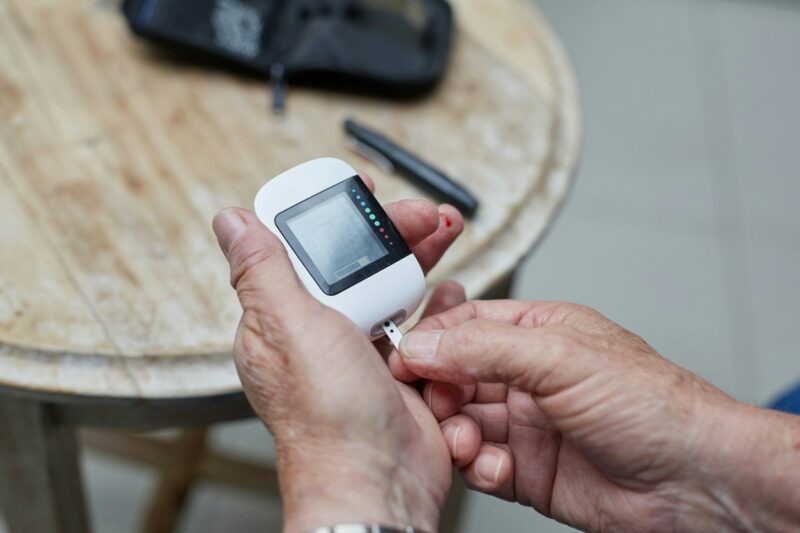
Prostate cancer is the second most common cancer in men worldwide and is the fifth leading cancer cause of death. Although it can be asymptomatic at an early stage, many cases can have a slow, indolent course that may not require surgery but only active surveillance and frequent followup.
Benign prostatic hypertrophy
In a previous article on benign prostatic hypertrophy (BPH), we talked about the prostate gland, which is situated below the bladder, with the rectum directly behind. It usually weighs between 30-40 grams and is approximately the size of a walnut. Its main function is helping in the production of seminal fluid, and it also helps in expelling semen during ejaculation.
BPH can present with symptoms of an irritated bladder, such as difficulty urinating, increased frequency and urgency, dribbling, incontinence, and even blood in the urine. While prostate cancer can present with the same symptoms, it is usually asymptomatic.
Risk factors for prostate cancer
Before we talk more about prostate cancer, let us talk about the risk factors associated with this disease.
1. Age – The risk of having prostate cancer increases significantly with age, especially after 50 years. Majority of cases are diagnosed in men older than 65 years old.
2. Family History – The risk is higher if a close relative has also been diagnosed with prostate cancer (e.g. father or brother), if multiple relatives have been affected, or if these relatives were diagnosed at a younger age.
3. Ethnicity – Certain groups have been found to have a greater risk of developing prostate cancer. Specifically, African American men have the greatest risk, while Asian and Hispanic men have lower rates.
4. Genetics – Some genes, when mutated, have been shown to increase the risk of prostate cancer. Examples are BRCA1 and BRCA2, which are primarily associated with breast and ovarian cancers in women.
5. Diet and Lifestyle – A diet high in red meat and high fat dairy, as well as obesity, lack of physical activity, and smoking, have all been associated with an increased risk.
6. Geography – Men living in North America, Europe, and the Caribbean have higher rates of prostate cancer compared to those located in Asia, Africa, and South America. However, studies have also shown that when men living in low-risk areas move to high-risk areas, their individual risk also tends t increase. This suggests that environmental and lifestyle factors also play a role.
7. Chemical Exposure – Exposure to certain chemicals, such as cadmium and Agent Orange (a herbicide used during the Vietnam War), have been linked to an increased risk of prostate cancer.
Protective factors for prostate cancer
There are some risk factors above that are unfortunately cannot be altered, such as genetics, age, and family history. Nevertheless, there are modifiable risk factors that, when altered, can be protective factors.
1. Diet and Nutrition – A balanced diet rich in fruits, vegetables, whole grains, and lean proteins is good for anyone, as well as maintaining a healthy weight. Some foods may be more impactful, such as tomatoes, broccoli, green tea, and berries. Consuming healthy fats, such as those in fish (e.g. salmon), olive oil, avocados, and nuts. A diet rich in antioxidants, including citrus fruits, can also be protective.
2. Physical Activity – As with most diseases, moderate to vigorous exercise for at least 150 minutes per week week is also protective against prostate cancer.
3. Quit Smoking – If you are smoking, ask for help in quitting, as stopping smoking is protective against prostate cancers and other types of cancers.
4. Regular Check-ups – Regular appointments with your family doctor can help you detect prostate cancer early.
Diagnosing prostate cancer
Should you or your doctor have a suspicion for prostate cancer, the diagnosis can be made with a combination of diagnostic tests and medical examination.
First, your doctor will conduct a detailed medical history, including symptoms present and pertinent family history. A physical examination can also be conducted, including a digital rectal exam (DRE). This will allow the assessment of the size, shape, and texture (i.e. if there are nodularities present) of the prostate gland
Afterwards, a blood test is done to measure the amount of prostate-specific antigen (PSA), which is used as an initial screening tool for prostate cancer. It is released into the bloodstream when there is some injury to the prostate, and while it is elevated in prostate cancer, it can also be elevated in benign conditions, for example due to BPH and inflammation (prostatitis).
If the PSA is abnormal, a transrectal ultrasound can be done to image the prostate gland. Other imaging modalities, such as a CT scan, can also be used. Should there be a definitive diagnosis of prostate cancer, imaging is also used to stage this disease and determine its spread to other parts of other body.
Finally, a prostate biopsy is performed for definitive diagnosis. Small tissue samples are taken from different areas of the prostate and are sent to the pathology laboratory for analysis. These biopsy samples, if ascertained to have cancer, are then assigned a Gleason Score that ranges from 6 to 10, with higher scores meaning more aggressive cancer.
Treatment options for prostate cancer
Depending on the results of the aforementioned diagnostic techniques, your medical team will discuss with you the recommended treatment plan and available options for you. This will depend on the stage and aggressiveness of the cancer, your overall health, and preferences.
1. Active Surveillance – Watchful waiting is a viable option for low-risk prostate cancer that is fairly asymptomatic. Active surveillance includes regular checks, including monitoring PSA levels and imaging. Treatment is deferred until there is evidence of disease progression.
2. Surgery – The prostate gland can be completely removed in a procedure called a prostatectomy. It can be accomplished using open surgery, laparoscopic, or robotic-assisted techniques.
Other adjunct modalities can include radiation therapy, chemotherapy, and hormone therapy (specifically androgen deprivation therapy). The latter is used to block the production of testosterone, which encourages prostate cancer cells to multiply.
There are other upcoming treatments, such as high-intensity focused ultrasound (HIFU), that may be used for localized prostate cancer. Deciding on a management plan is usually done with the patient and with a multidisciplinary team of doctors, including urologists and oncologists.
We can help
At Likas Nursing and Home Care, we can help you. Whether it’s escorting you to your medical appointments, managing your medications, or providing support in activities in your daily life (such as light housekeeping and healthy meal preparation) while you are navigating a new diagnosis or treatment plan.
Contact us for your personalized care plan today.



